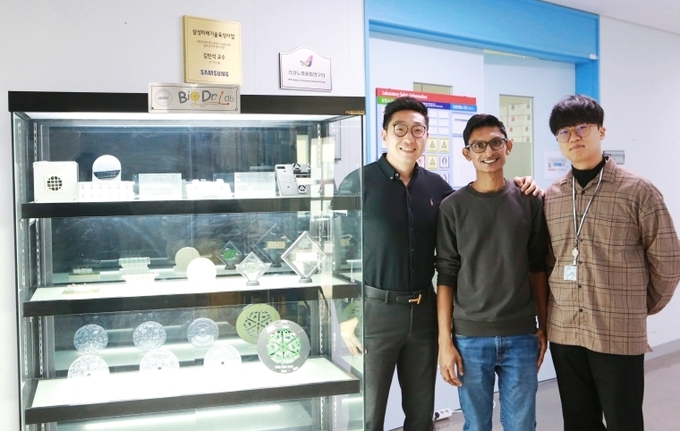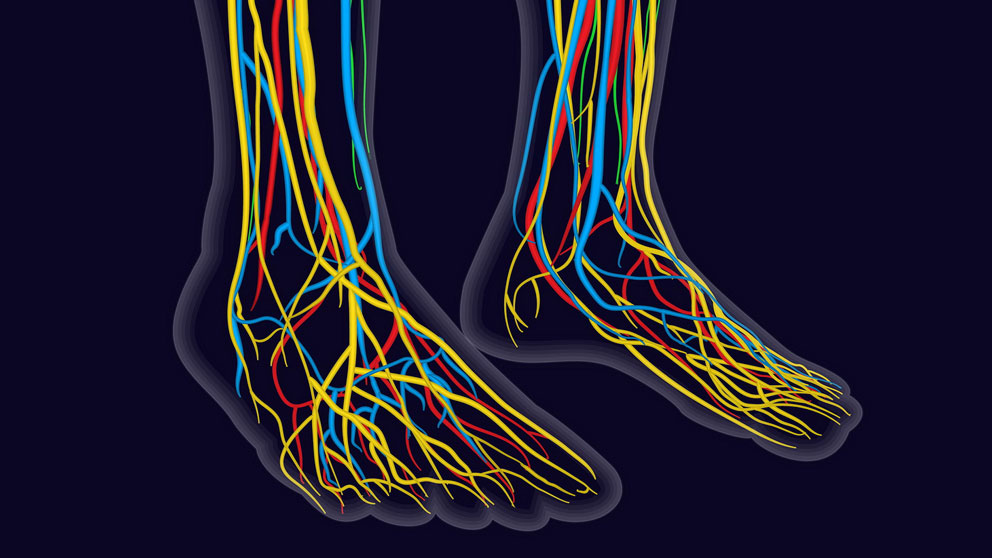Researchers develop technology to treat Charcot-Marie-Tooth (CMT)
The research team led by Professor Minseok Kim from the Department of New Biology at DGIST (President Yang Kuk) has developed a technology that can treat Charcot-Marie-Tooth (CMT) disease, an incurable hereditary disease, with electric stimulation instead of drug therapy. This technology has considerable potential for the development of an electronic medicine with minimal side effects in the future.

DGIST Professor Minseok Kim’s team develops an electronic medicine technology that restores abnormal protein behavior, the cause of Charcot-Marie-Tooth Disease (CMT). It presents the potential of electric stimulation-based treatment for chronic peripheral nerve disorders. DGIST photo
Wankyu Lim, DGIST (Daegu Gyeongbuk Institute of Science and Technology) via Medical Xpress March 31, 2023
The core of this technology is electric stimulation that corrects the abnormal distribution of peripheral myelin protein 22 (PMP 22), the cause of the disease. The research team discovered it by conducting a series of electric stimulation experiments using a CMT disease subtype 1A (CMT1A) cell model. The study was published in the March 15 issue of the journal Biosensors and Bioelectronics.
CMT disease causes muscle atrophy, numbness, foot deformities, paralysis, and other symptoms due to the loss of myelin sheath in peripheral nerves. It is a genetic disease that affects a large number of people, with approximately 1 in 2,500 individuals affected. However, there is currently no definitive treatment for this disease.
CMT1A, a subtype of CMT disease, is among the most prevalent types of peripheral nerve damage worldwide and is caused by PMP22 overexpression in Schwann cells. PMP22 overexpression in Schwann cells causes the PMP22 protein to aggregate in the cells, ultimately leading to peripheral nerve damage.
To address PMP22 overexpression, Professor Minseok Kim’s team developed a CMT1A cell model PMP22-overexpressing schwannoma cell. This team applied a high-speed electric stimulation screening platform to the cells to identify optimal stimulation conditions for effective therapeutic outcomes. This electric stimulation eliminated the PMP22 protein aggregation around the nucleus that occurs in CMT1A disease and restored the normal distribution of the PMP22 protein towards the cell membrane, similar to that of a normal Schwann cell.

Transport problems in Charcot-Marie-Tooth type 2. Charcot-Marie-Tooth disease (CMT) involves a progressive loss of peripheral nerve function, with resulting motor deficits. It particularly affects leg function, and fine motor deficits in the hands may also occur in the later stages of the disease. While severity and progression are widely variable, the more severe forms of CMT can significantly impair mobility. There is currently no treatment available. The Jackson Laboratory photo
In addition, the research team observed an increase in the expression of genes (e.g., MBP, MAG) that play an important role in the formation of myelin sheaths constituting a part of peripheral nerves and changes in the gene expression of transcription factors (Krox-20, Oct-6, c-Jun, and Sox10) that control myelin sheath formation, leading to the induction of myelination in the CMT1A cell model.
Professor Minseok Kim from the Department of New Biology at DGIST stated that, “The key of this study is that it is the first demonstration that electric stimulation can restore the normal distribution of PMP22, which is a major protein in CMT1A disease. We hope that new electric medicine technologies will soon be commercialized to address CMT disease that currently has no cure and causes suffering to millions of people worldwide.”
![]() Source DGIST via Medical Xpress and EurekAlert! AAAS
Source DGIST via Medical Xpress and EurekAlert! AAAS
| References |
Electroceutical approach ameliorates intracellular PMP22 aggregation and promotes pro-myelinating pathways in a CMT1A in vitro model, Intisar A, Woo H, Kang HG, Kim WH, Shin HY, Kim MY, Kim YS, Mo YJ, Lee YI, Kim MS. Biosens Bioelectron. 2023 Mar 15;224:115055. doi: 10.1016/j.bios.2022.115055. Epub 2022 Dec 30.
Peripheral myelin protein 22 (PMP22): growth arrest-specific protein 3 is a protein that is encoded by the PMP22 gene in humans. PMP22 is a 22 kDa transmembrane glycoprotein composed of 160 amino acids and is primarily expressed in Schwann cells in the peripheral nervous system.
Schwannoma: A tumor that develops in the nerve sheath, a tubular structure that surrounds and supports nerves.
Also see
Electrical Stimulation Lowers Protein Clumps, Aids Myelin: CMT1A Model Charcot-Marie-Tooth News
How nerves may lose their insulation Medical Xpress
Transport problems in Charcot-Marie-Tooth type 2 The Jackson Laboratory
☞ Orthotic Management of CMT, Charcot-Marie-Tooth
